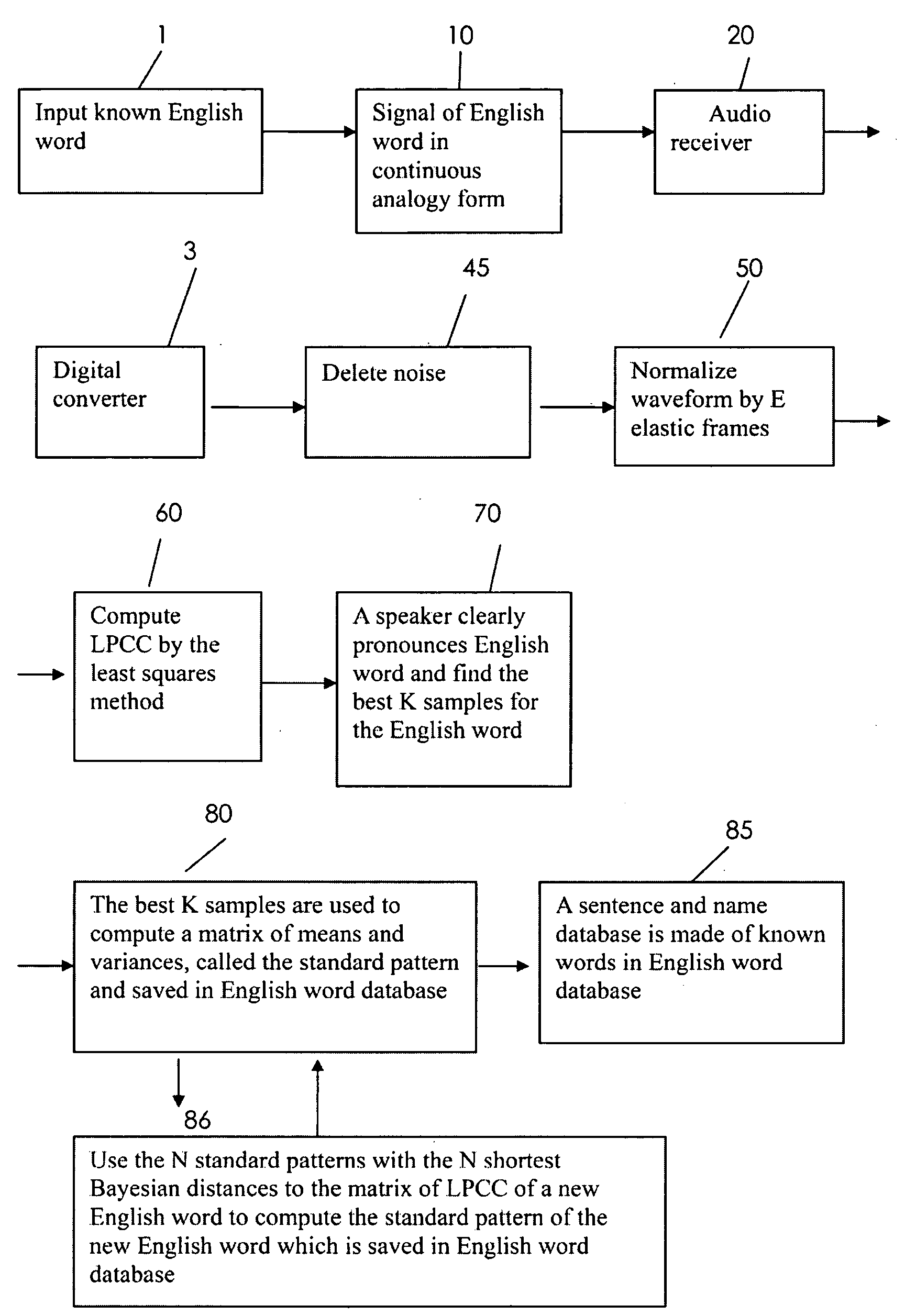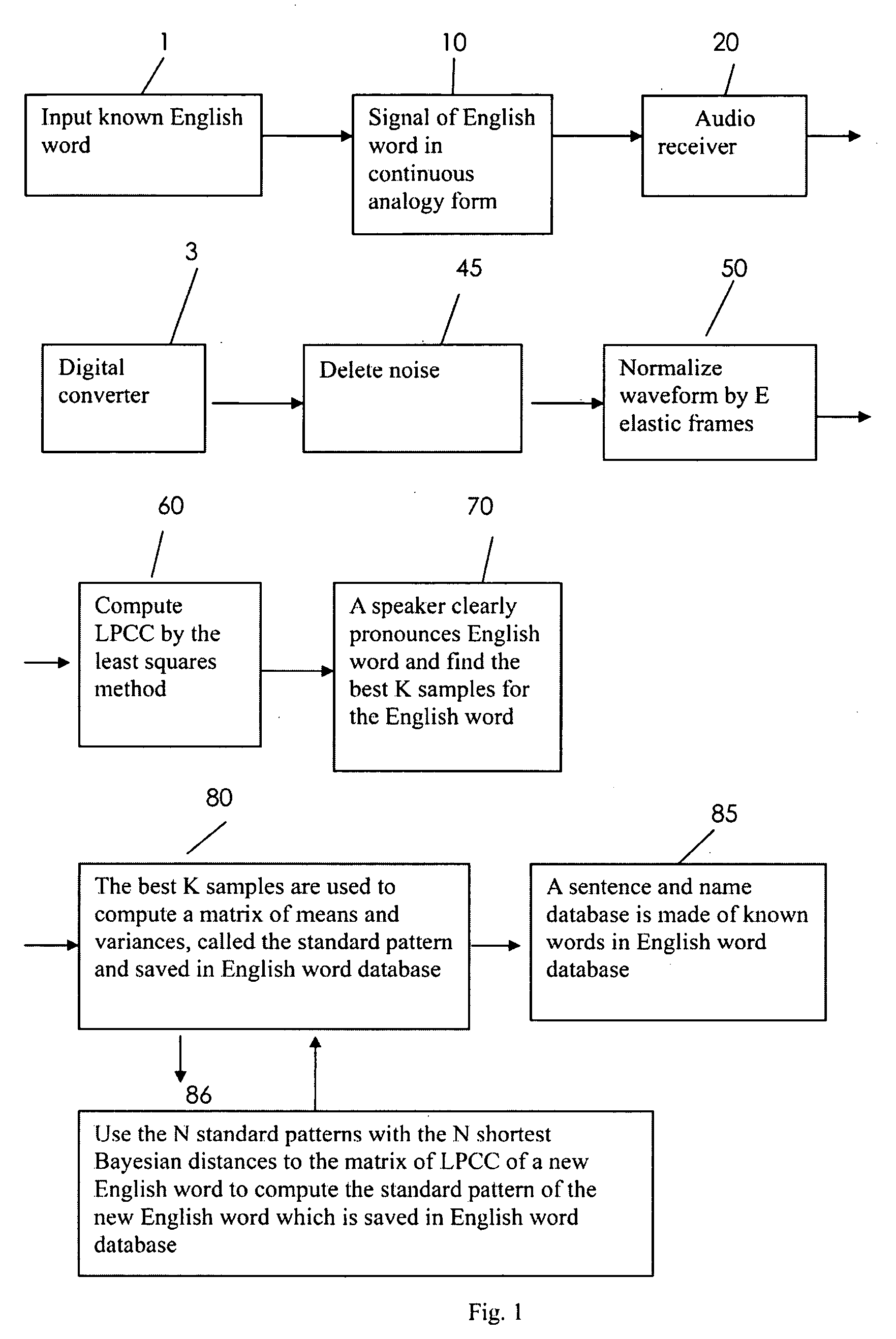Speech recognition method for both english and chinese
a speech recognition and english language technology, applied in speech analysis, speech recognition, instruments, etc., can solve the problems of large amount of computing time, many speech recognition devices with limited capabilities, and many tasks that require considerable computing time to accomplish
- Summary
- Abstract
- Description
- Claims
- Application Information
AI Technical Summary
Benefits of technology
Problems solved by technology
Method used
Image
Examples
Embodiment Construction
[0030]In the present invention, a Chinese syllable is considered as an English word with one single syllable and hence in FIG. 1 and FIG. 2, the flowcharts only show English words which include Chinese syllables.
[0031]FIG. 1 shows an input known English word (Chinese syllable) 1 which is continuous analog form 10and which enters an audio receiver 20 for receiving a series of speech waveform representing the unknown English word (Chinese syllable) utterance. A digital converter 30 then converts this waveform into a series of digital signals. A preprocessor 45 receives the series of digital signals from the digital converter 30 to delete the noise and the time intervals which do not have word (syllable) digital signals. After deletion of noise, the waveform left from deletion forms a real speech waveform denoting a word (syllable) utterance. Then the total length of the new waveform denoting a word (syllable) is uniformly partitioned into E equal segments by E elastic frames 50 withou...
PUM
 Login to View More
Login to View More Abstract
Description
Claims
Application Information
 Login to View More
Login to View More - R&D
- Intellectual Property
- Life Sciences
- Materials
- Tech Scout
- Unparalleled Data Quality
- Higher Quality Content
- 60% Fewer Hallucinations
Browse by: Latest US Patents, China's latest patents, Technical Efficacy Thesaurus, Application Domain, Technology Topic, Popular Technical Reports.
© 2025 PatSnap. All rights reserved.Legal|Privacy policy|Modern Slavery Act Transparency Statement|Sitemap|About US| Contact US: help@patsnap.com



